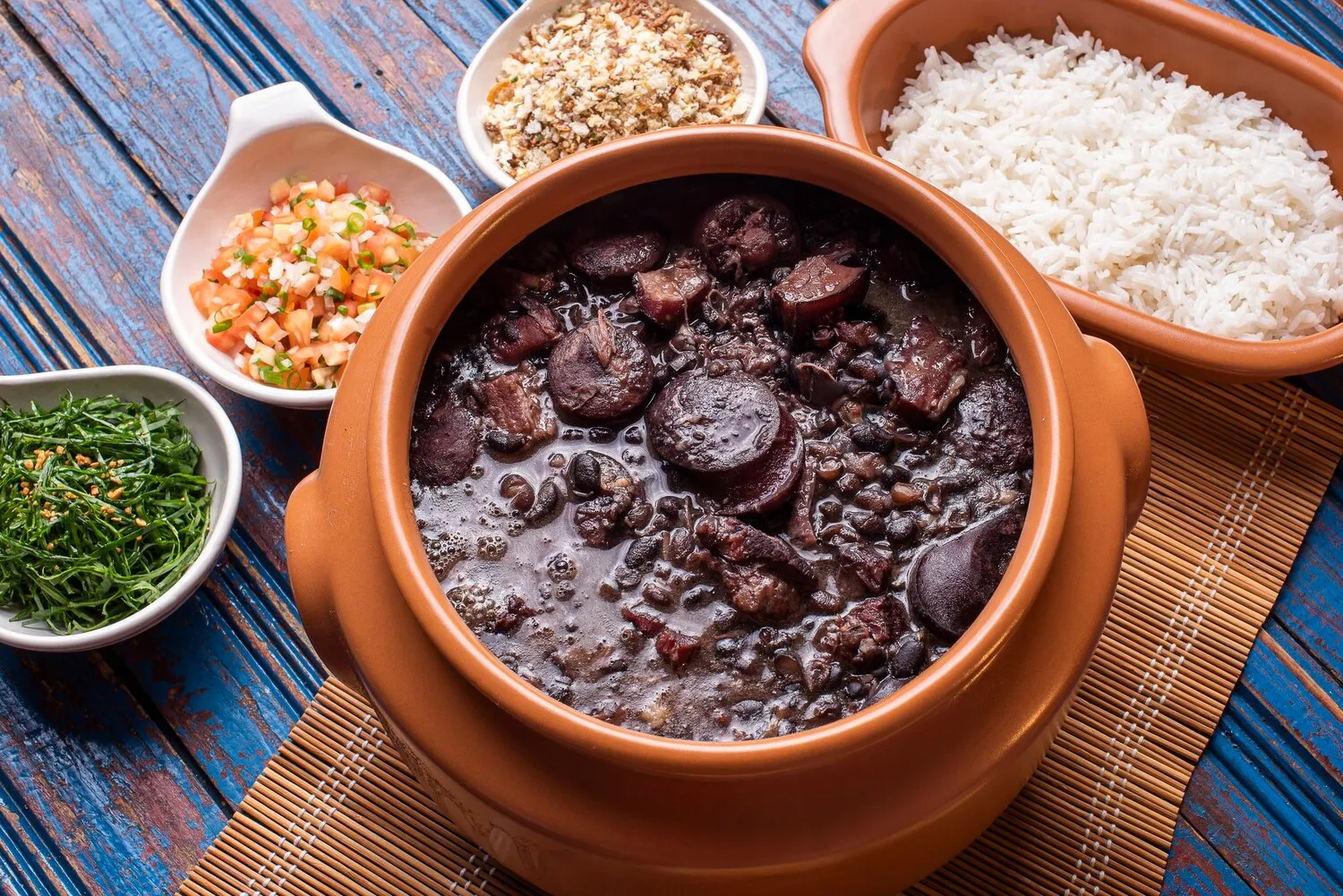
Feijoada
A rich stew of beans with beef and pork. Considered a national dish of Brazil.
Nutrition Facts
* The % Daily Value (DV) tells you how much a nutrient in a serving of food contributes to a daily diet. 2,000 calories a day is used for general nutrition advice.
Feijoada's origins are debated, with some believing it evolved from similar stews in Portugal and other European countries, adapted with ingredients available in Brazil during the colonial period. A popular myth suggests it was created by enslaved Africans using discarded pork parts, but historians find little evidence to support this. A more probable theory suggests that it evolved from a blend of European and African culinary traditions, becoming a symbol of Brazilian cuisine and national identity.
Feijoada is deeply ingrained in Brazilian culture, representing communal dining, national pride, and a celebration of flavors. It's more than just a meal; it's an experience often shared with family and friends.
Sunday Tradition
Feijoada is traditionally eaten on Saturdays or Sundays as a long, leisurely meal. It's a time for families and friends to gather, relax, and enjoy each other's company.
Regional Variations
While the basic recipe remains consistent, regional variations exist in the specific cuts of meat used and accompanying side dishes, reflecting the diversity of Brazilian cuisine.
Accompaniments
Feijoada is typically served with white rice, collard greens (couve), farofa (toasted cassava flour), orange slices (to aid digestion), and sometimes hot sauce (molho de pimenta). These accompaniments provide contrasting textures and flavors that complement the richness of the stew.
Symbol of National Identity
Feijoada is considered Brazil's national dish, a symbol of its cultural heritage and culinary identity. It's often served at celebratory events and national holidays.
Feijoada boasts a rich, savory, and smoky flavor profile, derived from the combination of black beans, various cuts of pork and beef (often including smoked and cured meats), and aromatic spices.
The black beans provide an earthy base, while different pork cuts (such as smoked ribs, bacon, sausage, and salted pork) contribute layers of smoky, salty, and fatty flavors. Beef, usually in the form of dried beef (carne seca) or beef trimmings, adds depth and umami. Garlic, onions, bay leaves, and often orange slices are used to enhance the stew's aroma and balance the richness. Peppers and other seasonings can be added for a touch of heat.
Soak the Beans
Soaking the black beans overnight reduces cooking time and improves their texture.
Desalt the Meats
Salted meats should be soaked in water for several hours or overnight, changing the water frequently, to remove excess salt.
Low and Slow Cooking
Feijoada benefits from slow cooking, allowing the flavors to meld and deepen. Use a heavy-bottomed pot or a slow cooker.
Don't Overcrowd the Pot
Cook the beans and meats in batches if necessary to avoid overcrowding the pot, which can lower the temperature and affect the cooking time.
Adjust Seasoning
Taste and adjust the seasoning throughout the cooking process, adding salt, pepper, and other spices as needed.
Explore additional Brazilian Stew dishes and restaurants
Explore Brazilian StewDiscover top dining spots and culinary experiences in V Redonda.
Explore V RedondaLearn more about the food culture, restaurant scene, and culinary heritage of Brazil.
Explore Brazil